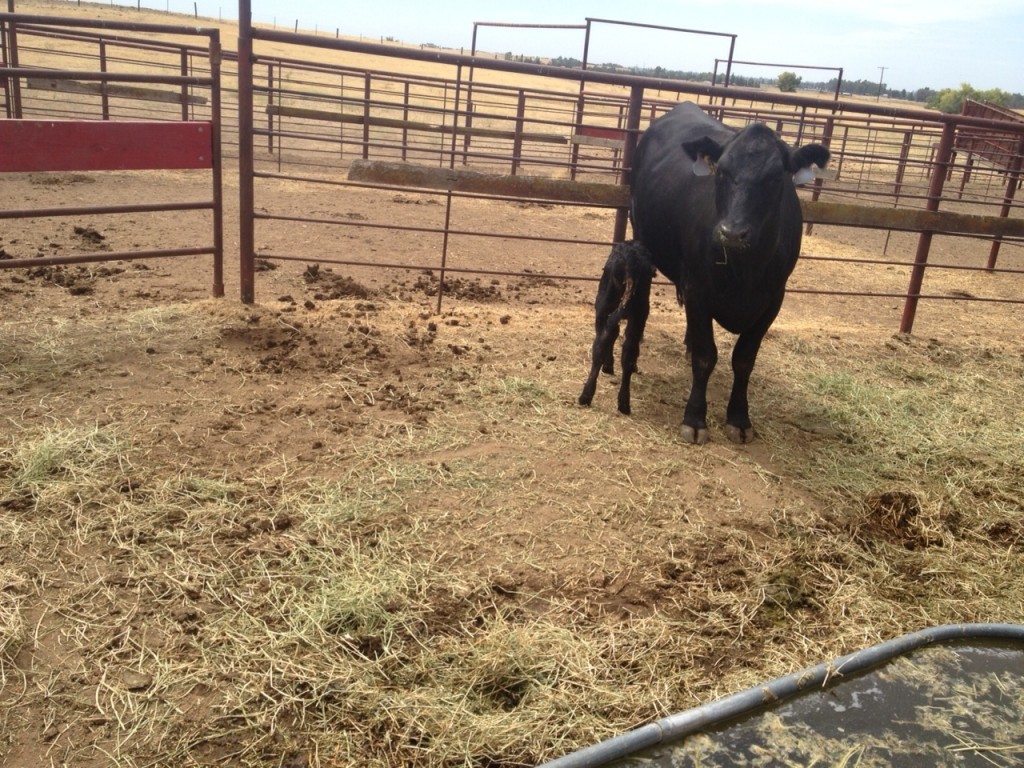It’s been an interesting Labor Day weekend on the .7 (dot seven) Ranch. Let’s just say the title of this holiday is quite fitting! While my brother and I we’re celebrating my birthday a littler early in the mountains, my mom was checking all the cows. Saturday we had a set of twins. One heifer and one bull calf, both healthy. Twin calves are often a bit of a predicament. Because our cattle are pretty close to the corrals, we bring the twins and their mother in so we can make sure that the calves are nursing and getting along just as they should. So that is just what my mom did. Sidenote: Generally a cow has a hard time raising twins. Sometimes she may not even accept the second calf. It takes a heck of a cow to raise a set of twins, one that is in great condition and has a really good udder. For this reason twins are not the optimal situation. Twin calves that are left on their mother tend to be quite a bit smaller than average. Since raising these animals is how we make a living, we want one mother cow to one calf so she can raise one big stout calf instead of two mediocre calves.
As the twins were getting situated in their new home for the next few days another first calf heifer had started to calve. When that calf hit the ground, you could tell something just wasn’t right. The new calf had a bit of a swollen head and it didn’t try to get up right away like most calves do. My mom noticed immediately that something wasn’t right so she intervened. (Sidenote: Most of the time we leave these cows alone and especially after calving. Mother cows can be very protective and you can get in a dangerous situation quickly.) After trying to get the calf up with no luck she gave the calf a shot that included Selenium, Vitamin E, Vitamin B & Vitamin A and D. Unfortunately nature took its course for this little calf and she died that afternoon.
At this point we were left with one cow that had twin calves, another cow with no calf and a few options. We chose to graft one of the twins on to the cow who lost her calf.
Every rancher has a different method of grafting a calf to a cow that is not its original mother. The method that my grandfather taught us includes taking a large majority of the hide from the dead calf and attaching it to the live calf sort of like a jacket. This allows the mother to recognize the same smell and feel of her original calf who died. This method certainly isn’t a glorious one but it’s proved most successful for us. My brother and mom tied the skin to the twin calf Sunday evening and put the two in a pretty confined area (this also helps the cow to accept the new calf). As of yesterday, the new pair seem to be getting along just fine. The mother cow was acting very protective over her new baby and her udder looked as if it had been nursed so we left the two alone.
When dealing with animals there are always variables. Sometimes things don’t go as planned and unfortunately some animals don’t make it. Luckily for us this all happened within a 24 hour period and we were able to give the cow a new calf and split the twins. For now, all is good on the .7 Ranch… until the next set of twins!


